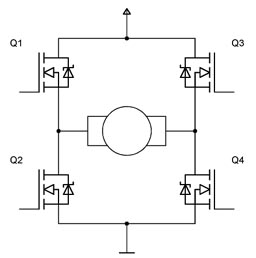
Twilight switch circuit

As dusk begins to fall, the sensor, which is a cadmium-sulfide light-dependent resistor (LDR), activates a small horn to provide an audible reminder to turn on the lights. The circuit can be turned off by simply switching on the headlights, which stops the noise. The base of transistor Q1 is connected through a voltage divider made up of resistor R4, LDR1 (the light-dependent resistor with an internal resistance of about 100 ohms in bright light and around 10 megohms in total darkness), and potentiometer R6. The base voltage of Q1 depends on the light level detected by LDR1 and the setting of R6. When LDR1 senses a high light level, its resistance decreases, allowing a greater base current to flow into Q1, causing it to conduct. When Q1 conducts, pin 4 of U1 is pulled to near ground potential, muting the oscillator. Conversely, if LDR1 detects a low light level, its resistance increases, reducing the base current to Q1, which cuts off the transistor and enables the oscillator. In practice, R6 is set so that at a suitable light level (dusk), the oscillator will activate. The anode of diode D1 connects to the light switch, which is linked to the vehicle's parking lights. When the lights are off, this point is connected to the negative chassis through the parking lamp, which does not affect the circuit since D1 prevents any current flow to ground from Q1's base via R6 and the sidelight lamps. When the lights are turned on, the anode of D1 connects to the positive supply through the parking lamp switch, applying voltage to the base of Q1 and biasing it into conduction. With Q1 conducting, pin 4 of U1 is pulled close to ground, disabling the oscillator even if LDR1's resistance is insufficient to do so.
The circuit employs a cadmium-sulfide light-dependent resistor (LDR) to monitor ambient light levels and control an audible alert system through a horn. The operation begins with the LDR, which varies its resistance based on the surrounding light conditions. In bright light, the resistance of LDR1 is low, approximately 100 ohms, allowing sufficient base current to flow into transistor Q1, which is configured as a switch. The voltage divider formed by R4, LDR1, and the adjustable potentiometer R6 determines the base voltage of Q1, allowing for calibration based on the desired light threshold.
When ambient light diminishes, the resistance of LDR1 increases significantly, leading to a decrease in base current to Q1. This reduction in current causes Q1 to turn off, allowing the oscillator circuit to become active, thereby triggering the horn. The oscillator's output is connected to pin 4 of operational amplifier U1, which is configured to mute the sound when Q1 is conducting.
The inclusion of diode D1 serves a critical protective function. It is connected to the vehicle's parking light switch, ensuring that when the lights are off, the circuit remains inactive, as D1 blocks any backflow of current from the parking lamp circuit. This design prevents unwanted activation of the horn when the vehicle's lights are not in use. Conversely, when the parking lights are turned on, D1 allows current to flow to the base of Q1, biasing it into conduction and effectively muting the oscillator, even if the ambient light conditions would otherwise suggest it should be active.
Overall, this circuit serves as a practical solution for ensuring that vehicle lights are turned on at dusk, utilizing simple yet effective electronic components to monitor light levels and provide an audible reminder. The careful arrangement of resistors, the LDR, and the transistor ensures reliable operation and user convenience.As dusk begins to -fall, the sensor (a cadmium-sulfide light-dependent resistor or LDR) operates a small horn to provide an audible reminder that it's time to turn on your lights. To turn the circuit off—simply turn your headlights on and the noise stops. The base of Ql is fed through a voltage divider formed by R4, LDR1—a light-dependent resistor with an internal resistor of about 100 ohms under bright-light conditions and about 10 megohms in total darkness—potentiometer R6.
Ql's base voltage depends on the light level received by LDR1 and the setting of R6. If LDR1 detects a high light level, its resistance decreases, thereby providing a greater base current for Ql, causing it to conduct. When Ql conducts, pin 4 of Ul is pulled to near ground potential, muting the oscillator. If, on the other hand, LDR1 detects a low light level, its resistance increases (reducing base currentto Ql), cutting off the transistor and enabling the oscillator. In actual practice, you set R6 so that at a suitable light level (dusk), the oscillator will sound. The anode of diode Dl connects to the light switch, where it connects to the vehicle's parking lights.
With the lights switched off, that point is connected to the negative chassis by way of the parking lamp. That has no effect on the circuit, as Dl blocks any current flow to ground from Ql's base via R6 and the sidelight lamps.
When the lights are switched on, the anode of Dl is connected to the positive supply via the parking lamp switch, thereby applying a voltage to the base of Ql, biasing it into conduction. With Ql conducting, pin 4 of Ul is pulled virtually to ground, disabling the oscillator even though LDRl's resistance is not enough to do so.
🔗 External reference
The circuit employs a cadmium-sulfide light-dependent resistor (LDR) to monitor ambient light levels and control an audible alert system through a horn. The operation begins with the LDR, which varies its resistance based on the surrounding light conditions. In bright light, the resistance of LDR1 is low, approximately 100 ohms, allowing sufficient base current to flow into transistor Q1, which is configured as a switch. The voltage divider formed by R4, LDR1, and the adjustable potentiometer R6 determines the base voltage of Q1, allowing for calibration based on the desired light threshold.
When ambient light diminishes, the resistance of LDR1 increases significantly, leading to a decrease in base current to Q1. This reduction in current causes Q1 to turn off, allowing the oscillator circuit to become active, thereby triggering the horn. The oscillator's output is connected to pin 4 of operational amplifier U1, which is configured to mute the sound when Q1 is conducting.
The inclusion of diode D1 serves a critical protective function. It is connected to the vehicle's parking light switch, ensuring that when the lights are off, the circuit remains inactive, as D1 blocks any backflow of current from the parking lamp circuit. This design prevents unwanted activation of the horn when the vehicle's lights are not in use. Conversely, when the parking lights are turned on, D1 allows current to flow to the base of Q1, biasing it into conduction and effectively muting the oscillator, even if the ambient light conditions would otherwise suggest it should be active.
Overall, this circuit serves as a practical solution for ensuring that vehicle lights are turned on at dusk, utilizing simple yet effective electronic components to monitor light levels and provide an audible reminder. The careful arrangement of resistors, the LDR, and the transistor ensures reliable operation and user convenience.As dusk begins to -fall, the sensor (a cadmium-sulfide light-dependent resistor or LDR) operates a small horn to provide an audible reminder that it's time to turn on your lights. To turn the circuit off—simply turn your headlights on and the noise stops. The base of Ql is fed through a voltage divider formed by R4, LDR1—a light-dependent resistor with an internal resistor of about 100 ohms under bright-light conditions and about 10 megohms in total darkness—potentiometer R6.
Ql's base voltage depends on the light level received by LDR1 and the setting of R6. If LDR1 detects a high light level, its resistance decreases, thereby providing a greater base current for Ql, causing it to conduct. When Ql conducts, pin 4 of Ul is pulled to near ground potential, muting the oscillator. If, on the other hand, LDR1 detects a low light level, its resistance increases (reducing base currentto Ql), cutting off the transistor and enabling the oscillator. In actual practice, you set R6 so that at a suitable light level (dusk), the oscillator will sound. The anode of diode Dl connects to the light switch, where it connects to the vehicle's parking lights.
With the lights switched off, that point is connected to the negative chassis by way of the parking lamp. That has no effect on the circuit, as Dl blocks any current flow to ground from Ql's base via R6 and the sidelight lamps.
When the lights are switched on, the anode of Dl is connected to the positive supply via the parking lamp switch, thereby applying a voltage to the base of Ql, biasing it into conduction. With Ql conducting, pin 4 of Ul is pulled virtually to ground, disabling the oscillator even though LDRl's resistance is not enough to do so.
🔗 External reference





